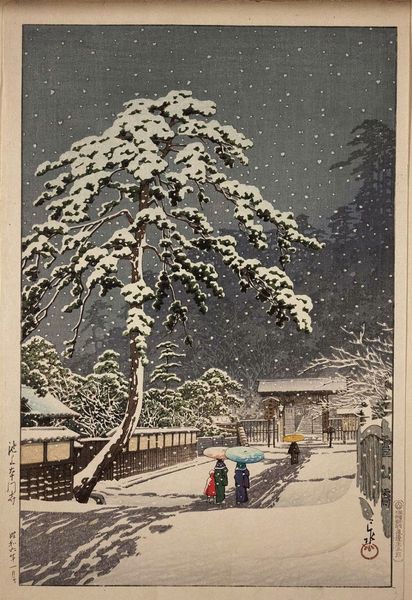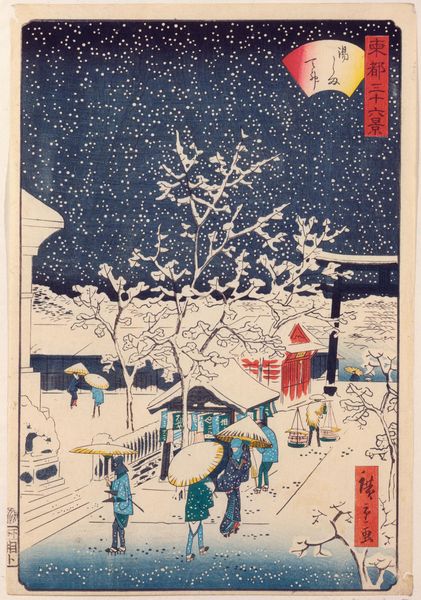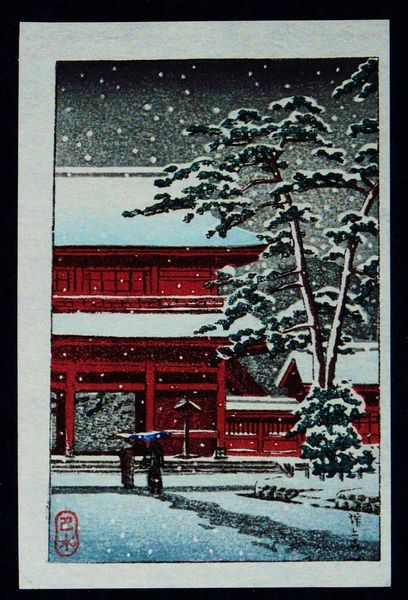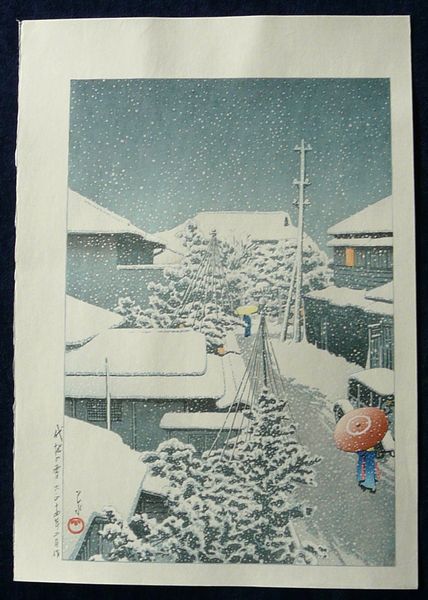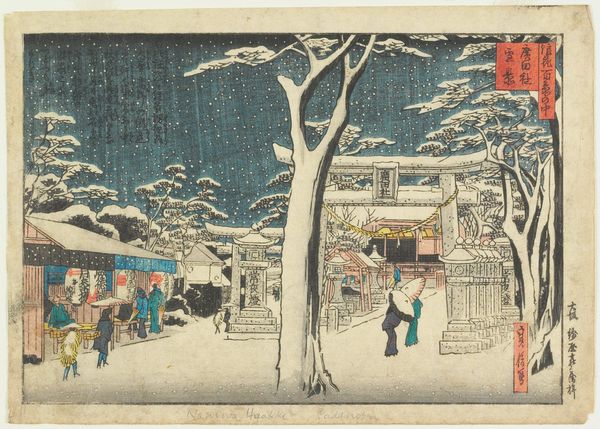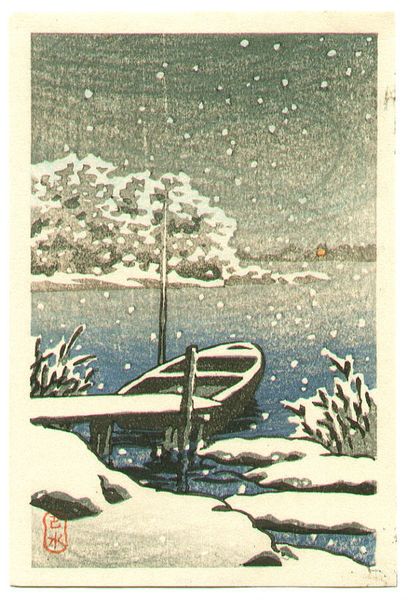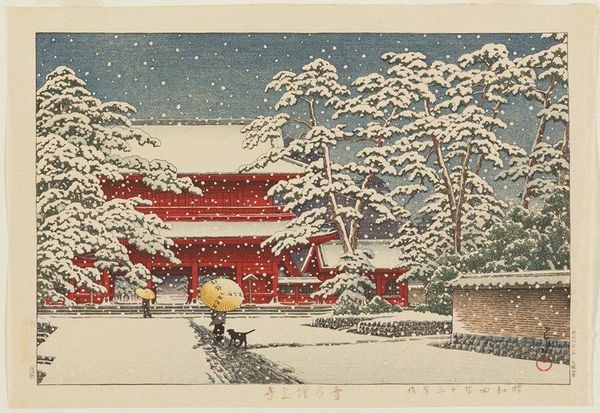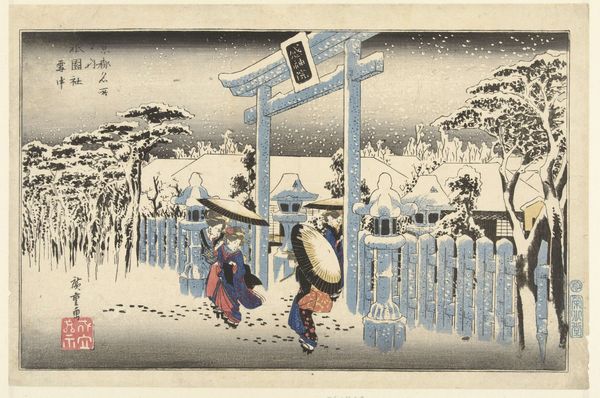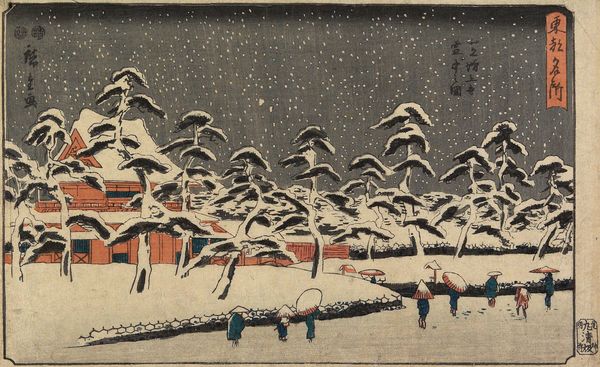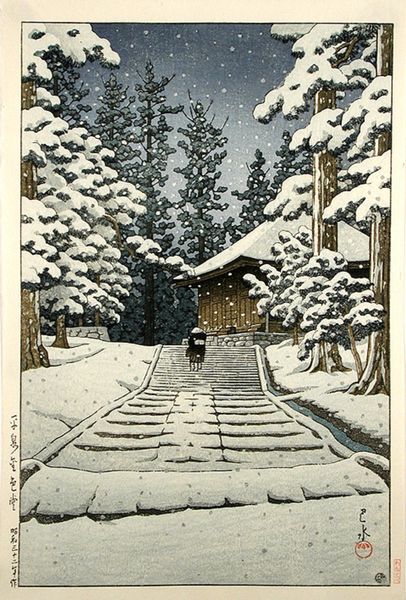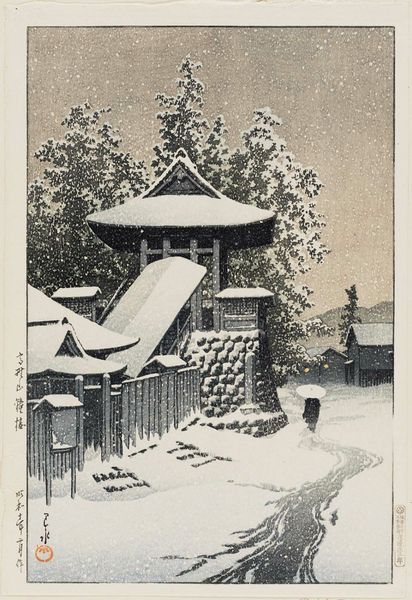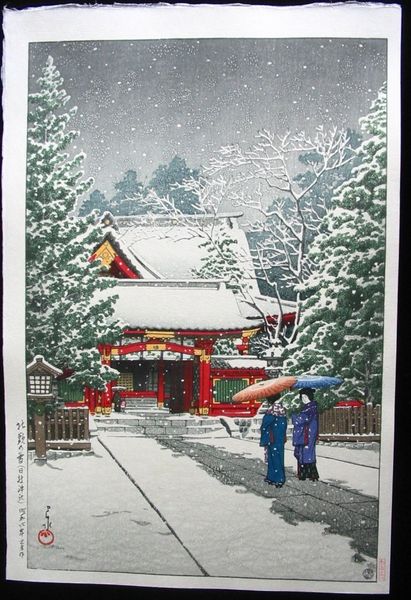
Copyright: Public domain Japan
Curator: Immediately I’m transported. It's a scene both hushed and magical. What are your first impressions? Editor: There’s a strong feeling of serenity here. You can almost hear the muffled sounds of the snowfall, the soft crunch of snow underfoot. It reminds me of that fleeting stillness just before a big societal shift. Curator: That's an interesting point of view! We're looking at "Ikegami Honmonji Temple," a woodblock print by Hasui Kawase created in 1931. He really captures a sense of time standing still, doesn't he? Editor: Absolutely. And if you examine the historical moment in Japan at that time, you have an increasing nationalism intertwined with the effects of economic depression—an unsettling quiet before a storm. Are those women visiting the shrine despite the harsh weather, or just hurrying home to escape it? What would they be praying for in that moment, I wonder? Curator: Such insightful questions! Kawase’s use of the snowy landscape—that gorgeous, snow-laden tree dominating the foreground—lends an air of gentle melancholy, no? Almost like nature mirroring our own fleeting existence. Editor: Or perhaps a resilient natural world enduring despite human turmoil. These ukiyo-e prints were, in their time, affordable mass-produced items, glimpses into a supposedly unchanging, traditional Japan, consciously offered during a period of radical transformation, promising some sort of nostalgic, aesthetic reassurance. Curator: Nostalgia certainly resonates. And speaking of aesthetics, the artistic construction of this image is very conscious. He’s framing the women—the general population, so to speak—in this space that’s hemmed in by walls, and directed towards a vanishing point in the distance. It suggests that individual paths may exist, but perhaps the range of motion is limited. What do you make of that symbolism? Editor: Kawase’s image becomes less about reflecting some kind of "pure" Japanese culture, and more about crafting it for a specific purpose and audience at a turning point. How interesting is it to then have those gorgeous, jewel-like color gradations, making this potentially unsettling image so lovely! Curator: It is fascinating how those gentle color palettes make you linger even as the composition hints at tension! Well, it appears we’re out of time for today. Any final thoughts before we move on? Editor: This print feels like a powerful reminder that art, even when seemingly focused on beauty or tradition, often holds deeper, sometimes conflicting layers of meaning, if only we take the time to see it in context.
Comments
No comments
Be the first to comment and join the conversation on the ultimate creative platform.
